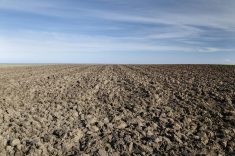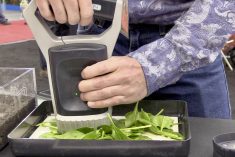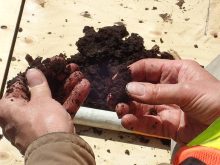Brown University study finds deficient Brazilian soils hold on to phosphorus while rich Iowan farmland is spoiling waterways even though much less of the fertilizer is being applied
A new American study has turned a long-held belief on its head by discovering that — in one respect, anyways — growing soybeans in Iowa is environmentally worse than growing them in the former Amazon rainforest.
Researchers from Brown University found Iowa farmers are doing more harm to waterways than their counterparts in Matto Grosso, Brazil.
The soils of the Amazon basin are among the poorest in the world, but now produce crops at a rate that rivals that of global breadbaskets. The Brazilian soils require massive amounts of both lime (to raise soil pH) and phosphorus. The latter is a serious pollutant as it encourages algae growth and, in extreme cases, eutrophication of entire lakes or streams.
Read Also

Manitoba sclerotinia picture mixed for 2025
Variations in weather and crop development in this year’s Manitoba canola fields make blanket sclerotinia outlooks hard to pin down
But despite heavy application, phosphorus is not causing problems in Matto Grosso, researchers found.
“If you are concerned about the global phosphorus supply, Brazil is your problem — they are using a ton of it,” said Stephen Porder, assistant professor of biology and co-author of the study.
“If you are concerned about lakes and rivers being filled with algae, then Iowa is your problem, and learning how to mitigate even very small amounts of loss after decades of overfertilization is a real challenge.”
The “good news” is that the nutrient-deficient, but deep soils in Brazil keep such a tight grip on phosphorus that almost none of the fertilizer is ending up in nearby waterways, the researchers found. The exact opposite was the case in Iowa, where the relatively fertile soils release phosphorus much more readily. Soybean farming goes back to the 1920s in Iowa and in many places excess phosphorus was used to increase and ensure high yields, leading to widespread phosphorus pollution.
Since 1995, Iowa farmers have used much less phosphorus, adding only a net of three kilograms per hectare per year (only one-tenth of Matto Grosso levels), but local lakes and rivers are being polluted because the soil is still releasing all that phosphorus applied long ago. Half of the waterways in Iowa assessed under the Clean Water Act are listed as impaired.
Adding phosphorus appears to be a balancing act, the researchers found, citing findings from a third area they studied near Buenos Aires, which has soils similar to Iowa’s. Until 2000, the researchers found, soybeans were drawing more phosphorus out of the soil than farmers were adding, leading to net deficits of phosphorus without much pollution. More recently, the Argentines have been adding more of the fertilizer, leading to a roughly break-even phosphorus budget.
“They are in sort of a sweet spot in a way,” Porder said. “They have these very fertile soils and came to the game a little bit later. They essentially mined the soils for nutrients for a while and now they are bringing it back into balance.”
By 2050, Porder said, the world’s farmers will need to grow about 70 per cent more food. With limited supplies both of phosphorus and clean water, farmers must balance adding enough phosphorus to maximize yields but little enough to avoid unintended losses.
“With increasing global demands from a growing population and growing appetites for commodities like meat, we will need to produce much more from cropland over the coming decades,” said lead author Shelby Riskin.
“To do this least badly, that is, with a minimum of environmental costs, will be one of the great environmental challenges of the 21st century. Phosphorus in soybeans is just one example, but illustrates a broader point: We have to produce a lot while being aware of local and global environmental costs. What this means for management is different in different places.”


















